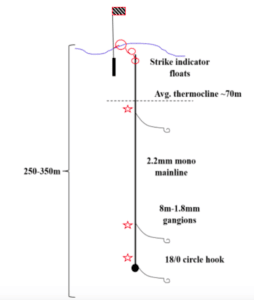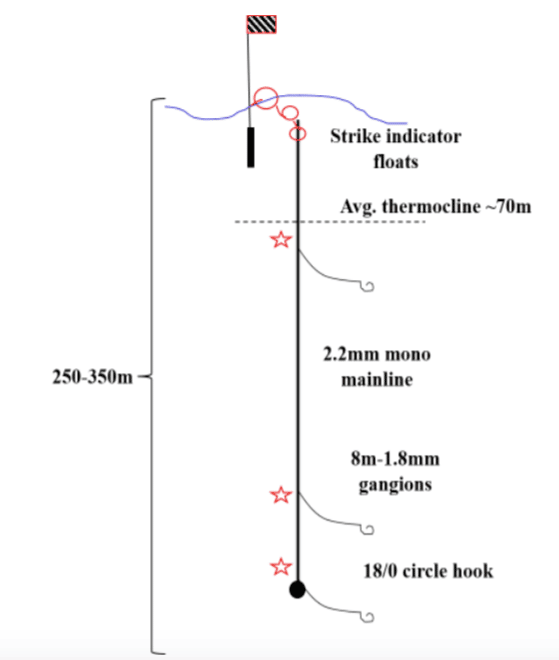When a politician changes heart over something that millions of others have changed their mind on and owns up to it, we call them “evolved.” But when the Pacific Fishery Management Council, led by California, changes course on authorizing deep set buoy gear (DSBG) despite overwhelming public support for transitioning away from indiscriminate, industrial-scale fishing gears towards this small-scale greener alternative, we call it a “flip-flop”.
 Over the past several years, the recreational community on the west coast actively voiced support of the Council’s authorization of deep set buoy gear. Deep set buoy gear has a smaller footprint than more traditional commercial gear such as multi-mile longlines and drift nets. Smaller boats, employing a smaller crew and actively tending just ten pieces of gear, each with just 2 or 3 hooks, can quickly retrieve and dress swordfish and fetch a higher price per pound. This gear is proving to have a smaller ecological footprint, i.e. minimal bycatch of turtles, billfish and sharks, and thousands of recreational fishermen, fishing clubs and businesses wrote letters of support and dozens of people representing fishermen and ocean conservationists attended Council meetings to provide public comment.
Over the past several years, the recreational community on the west coast actively voiced support of the Council’s authorization of deep set buoy gear. Deep set buoy gear has a smaller footprint than more traditional commercial gear such as multi-mile longlines and drift nets. Smaller boats, employing a smaller crew and actively tending just ten pieces of gear, each with just 2 or 3 hooks, can quickly retrieve and dress swordfish and fetch a higher price per pound. This gear is proving to have a smaller ecological footprint, i.e. minimal bycatch of turtles, billfish and sharks, and thousands of recreational fishermen, fishing clubs and businesses wrote letters of support and dozens of people representing fishermen and ocean conservationists attended Council meetings to provide public comment.
In November 2015, the Council seemed to yield to public sentiment and firmly stated its intent to “move forward rapidly” with the authorization of deep-set buoy gear. They followed this statement with a unanimous vote in March 2016 to develop a range of alternatives for authorizing DSBG. However, in June, they flip-flopped, and voted to halt authorization of DSBG in lieu of more data collection.
Sure scientists change their minds in the face of contradictory evidence, but California’s action came as a surprise given the report California Department of Fish and Wildlife (CDFW) submitted in March stating “CDFW is supportive of moving forward with analysis and regulatory development to authorize use of the gear under the Highly Migratory Species Fishery Management Plan, recognizing it will not be possible to resolve all unknowns surrounding a new fishery that has yet to exist.”
While California made the June motion under the guise of needing more information before authorizing buoy gear, it is not clear what questions exist that could not be answered by results from the five years of research, development and experimental fishing already conducted by the Pfleger Institute of Environmental Research. This research was supported through the National Marine Fisheries Service’s Bycatch Reduction Engineering Program and California’s own Ocean Protection Council.
Wild Oceans joined with the Coastal Conservation Association of California, American Sportfishing Association, and International Game Fish Association in writing a letter to the Director of California Fish and Wildlife, expressing our concern and requesting a meeting to discuss this sudden change of heart.
Public opinion did not change, new scientific evidence did not emerge, but California changed its mind, delaying action on a low impact gear that can effectively target swordfish with minimal bycatch. In this case, small is proving better and it’s time for the Council to stop flip-flopping and authorize deep set buoy gear.
Written By Theresa Labriola of Wild Oceans





